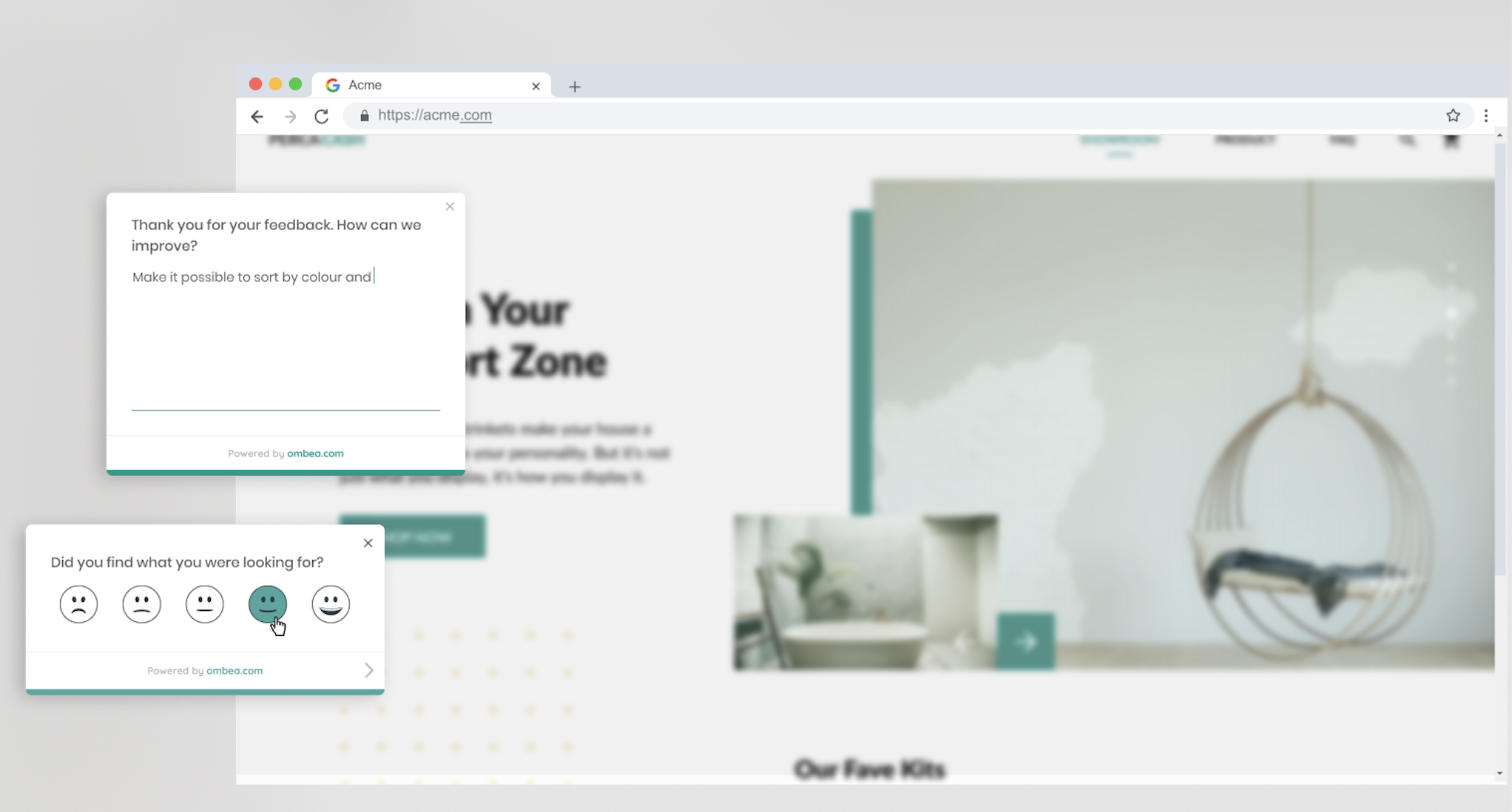Ombea - Measure employee happiness and create better customer experiences
I’m sure you’re very familiar with how important it is to collect feedback from your client base. You want to see them happy so they return and keep buying your product. However, this article is about something else which is oftentimes overlooked.
Your team also needs to be happy in order to produce satisfying results. Happy employees provide better customer experiences, so for customer-facing roles, there is a big benefit to having highly engaged staff.
Everyone knows that engaged teams create memorable results, yet few execs follow through to try to make a better working environment. I’m not telling you anything new, but you have to walk the walk, not just talk the talk of being there for your team.
By developing a strong relationship between the organisation and your employees, they will want to work harder for the company and are more likely to continue working for you, rather than looking for external job opportunities.
The norm
What happens in most companies is there’s a yearly survey running around to collect feedback on employee happiness. 2 times per year at best! If the participation is optional, fewer than 5% will take part. If it is compulsory, then you can’t truly rely on that data as its sincerity is doubtful. The yearly surveys are usually long and have multiple open-ended questions. This means they are time-consuming and not all that appealing to fill in, resulting in low participation. The problem with these surveys is they are trying to do too much in too little time spans, which are not relatable to a normal human. Even if you’ve been heard as an employee now, you’re not going to be heard for another 11 months and humans are a lot more complex than that. Also, the answers received in these surveys are very complex and companies often times need consultants to translate what should be done. Do you think most companies hire those consultants? You guessed it: NO! What is the overall end result? The survey’s responses are too complex so they are in most cases tossed aside and being labelled as “well, at least they have a job!“. You really don’t want to be that type of company 😔
In my experience working as a CX Consultant/Zendesk Consultant, I’ve interacted with multiple dozens of support teams from many different fields. I can say that not one, NOT ONE has ever mentioned support agent happiness. That’s a bit worrying to me. In my view, there’s a slight discrepancy between saying you want to improve your Customer Satisfaction ratings, but you’re not concerned at all about who is supposed to be at the forefront of delivering that Customer Satisfaction improvement. It’s ok, the corporate culture has not been addressing this matter as being important, but I’m here to confirm that it is. Do you think it’s a coincidence that Google makes a playground of their headquarters and is also one of the most successful tech companies on the Planet? Ok, sure, but Dominic, they have all those budgets available for that purpose. Yes, as if they had all that budgeting to begin with.. NO, they did not, they grew just like any other company.
The stats
Hiring a new employee costs a company over 200% of their salary. It is pretty obvious that the incentive is to want to keep people on board, rather than an employee turnover.
Statistics show that companies with highly engaged employees outperform their competitors by 147 per cent, while businesses that excel at customer experience have 1.5 times more engaged employees than companies with a record of poor customer experience.
Companies that support remote work have 25% lower employee turnover. Too many statistics to prove a point? No worries, I have a few more haha. Highly engaged employees are 75% less likely to be looking for a job.
In a recent study, out of 1000 workers taking part in the survey, 31% had quit their job in the first 6 months due to poor onboarding. This is nuts! Imagine just being there and asking constantly what you can improve. It’s difficult to be this flexible in a large organisation, but it’s even more difficult to create a long-lasting business. If you’re not committed to creating a long-lasting company, then why should anyone else be?
Only 4% of unhappy experiences are captured via email surveys. Imagine that 96% are left undiscovered. How hurtful that can be for a business. Ouch!
It’s different now with Covid as the working culture has shifted irreversibly to working from safe environments. I myself have been working remote for 7+ years and I’m more than used to it. However, some people find it difficult to focus if not surrounded by other team members. That’s also ok, not everyone is built the same way, people are different and that’s great! Imagine you had a tool where you could ask either publicly or anonymously “How are you finding working from home?“ If you got a 40% answers in negative, then hell, you now have a lead on what you can do to make those people happy. You can setup the office to safely accommodate some of those employees who crave connection. Obviously with the necessary sanitary precautions in mind.
Paul Jenner - VP for Sales of OMBEA explains it much better than I can here.
What is eNPS?
The eNPS score offers a very different approach to measuring engagement. Similar to the way that the NPS measures how likely it is that a customer would recommend the company to others, the eNPS is formed around the same type of question – “How likely is it you would recommend this company as a place to work?”
The solution
The middle ground is to collect feedback on a regular basis, monthly, or even weekly. There’s obviously a limitation to the resources available to act on the feedback you collect. However, you can understand more about what you need to act on in smaller increments.
Some employees don’t want their management to know they are unhappy with them. And rightfully so, it could cost them their job. Luckily there are anonymous surveys like the tool I’m about to recommend offers.
I don’t have all the answers, but I do know of smarter ways of collecting feedback and I’m going to share one with you. This is a guest post for OMBEA. I don’t advertise things unless I believe in them. In return for this post, I get to appear on their website for Customer Experience consultants as a referral. Yay!
OMBEA is a feedback tool used to make every experience count. The image below will clarify that for you.
It can be used online as well as offline.
Let me walk you through how it works for online experiences. We are in a post Covid world so we need to keep safe.
Ask the right question at the right time
You can trigger the right question to appear directly after delivering an experience or at a certain moment in the users’ journey.
Integrate it into your look and feel
You worked hard to design a successful website or app. Don't let a third-party widget ruin it. Customize the style using CSS; the same language that your web designers are already using
friendly instead of cold and static
A great survey is like a great conversation. You can create conversational surveys using incredibly simple question logic. The result is quicker surveys with increased response rates.
Resolve issues. Boost positive reviews.
Address poor experiences before it’s too late and leverage your fans by routing them to the review sites or endpoints of your choice
View your feedback and turn it into success.
It works just about anywhere on any platform and installing it is a breeze!
If you’d like to discuss team happiness, make sure to smash the red button bellow and book a call with me.






